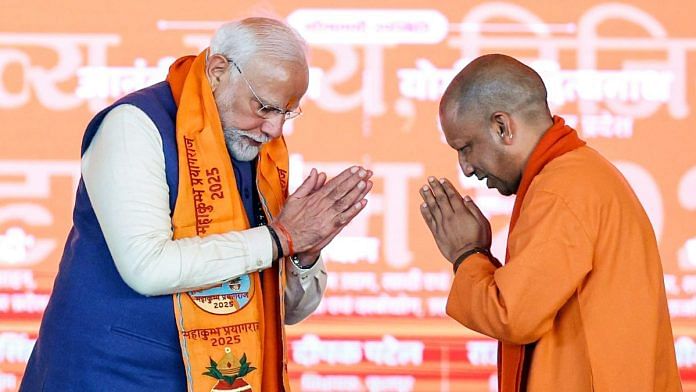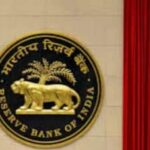What the BJP’s and the government’s spin doctors say off the record is equally fantastic—as if convinced of our credulity bordering on stupidity. One of them is that the party wanted to snatch Rahul Gandhi’s main poll plank. Really! What made the BJP so nervous about it, suddenly? A series of poll victories in one state after another? Obviously not. There is no electoral evidence to suggest that Gandhi’s caste census demand was getting any public traction.
Another reason cited by the spin doctors is the Bihar Assembly election. It’s fallacious, too. Such a big decision is not taken in view of just one Assembly election—that, too, in a state where the National Democratic Alliance (NDA) is handsomely placed by all accounts. Besides, in Bihar, politics has been centred on caste quota for so long—starting way back with Karpoori Thakur government’s layered reservation system in 1978 and continuing to date. The Nitish Kumar government has followed up its caste survey by increasing quota to 65 per cent, which is stuck in the Supreme Court. The Centre’s caste census announcement can’t really be an emotive issue in Bihar.
That brings us to the Opposition parties’ stance that the caste census is a ‘diversionary’ tactic. Seen together with their jibes at the government for its ‘inaction’ after the Pahalgam terror attack, Opposition leaders seem to be drooling at the prospect of the Modi government not avenging the killing of Hindu tourists. They are jumping the gun way too soon. There is no way that PM Modi won’t respond. He knows better than anyone else that inaction would mean the liquidation of Brand Modi. He is in no hurry. The Bihar election is six months away.
Essentially, we don’t know what made Modi-Shah take the U-turn on caste census. What we know is that this gambit can potentially have complex and unpredictable consequences that the ruling party might not have accounted for. I can count three, at least.
First, the OBCs, the Scheduled Castes or the Scheduled Tribes swung toward Modi as aspirational classes, not as caste or tribal blocs. They actually came as the four castes PM Modi mentioned- the poor, the youth, the women and the farmers. In fact, he could have added a fifth one—the middle class. He showed them all dreams of a better life, a better future for their children in a better India. As beneficiaries of his government’s welfare schemes and programmes and as stakeholders in his vision for India, they formed a class of their own. They would have voted for Modi even if he was a Thakur, a Brahmin or a Bhumihar. The BJP’s caste census gambit has come as a rude reminder—that Modi, like the old traditional politicians, also sees them as mere caste groups and wants to play the same identity politics as others have all these years and decades. Caste census blows away the fundamentals of Brand Modi.
Second, caste is a very touchy issue involving all sorts of pride and prejudice, which, more often than not, don’t square with sense and sensibility. The census will tell caste groups where they stand numerically̦, and so politically, economically, educationally, and socially. How will they react when the official figures are out? It’s like opening Pandora’s Box. And however much the BJP wishes, Brand Modi will not be able to absorb the blow.
Those who find themselves at the bottom in the caste census may rise up and demand immediate redressal. The government would find itself on a slippery slope. Trust Rahul Gandhi & Co to up the ante and push for the removal of the 50 per cent reservation cap. With the officially acknowledged have-nots up in arms, the Modi government would have to agree, wishing that the judiciary would come to its rescue. But, what after the quota ceiling? It won’t be enough to address the grievances of those whose long-lingering sense of being dispossessed in the current setup would be officially certified. Well, probably reservation in the private sector! Then what? Budgetary allocation for individual castes and sub-castes? Redistribution of wealth? Well, the Modi government will surely be on a slippery slope after the census is out.
The third consequence of the caste census is, however, something the current BJP leadership might certainly have factored in—that is, a change in the eligibility criteria for PM Modi’s successor. Just think of the likely scenario. Toward the end of PM Modi’s third term, when the caste census would have triggered a huge political maelstrom, with different backward castes demanding a share in the socio-political and economic power structure, who would be in the reckoning for an OBC PM’s successor? Not a Brahmin or a Thakur, for sure. That would make things so difficult for Yogi Adityanath, a Thakur, and two other putative contenders who are Brahmins— Devendra Fadnavis and Nitin Gadkari. Assam CM Himanta Biswa Sarma, though not seen as a strong contender as yet, is also a Brahmin. The caste census and its likely fallout would change the eligibility criteria for the front runners in the succession race. An upper caste leader would struggle to keep their place in the race, for sure. That would leave two other top contenders in the list—union home minister Amit Shah, a Bania, and union minister and former Madhya Pradesh chief minister Shivraj Singh Chouhan, an OBC leader. Chouhan has a great CV as an OBC leader with a mass base in Madhya Pradesh and a good following outside his state, too. Shah is not an OBC leader, but a Bania can always be an acceptable face in an OBC versus upper castes political milieu. What goes in Shah’s favour is his hold over the BJP organisation and the fact that all CMs, MPs and legislators in states owe it to him. He has handpicked them all. That’s a huge advantage in politically volatile times.
It’s inexplicable why the BJP should decide to be a disruptor by bringing the caste census when it’s so comfortably placed as the dominant party in India. If Opposition leaders like Rahul Gandhi play such disruptive politics, it’s understandable. They are desperate to break the BJP’s dominance of the political landscape. But why the BJP? It’s difficult to answer when one looks at the large picture. But, in the context of PM Modi’s succession race, it doesn’t look so mindless and thoughtless, after all.
(Edited by Theres Sudeep)








